While we all agree that cycling outdoors is wonderful, it's not always possible to get outside. Indoor training gives you the chance to turn the pedals and top up your fitness when it's difficult to head out.
There are a variety of reasons to consider indoor cycling and numerous benefits: it’s convenient, time-efficient, not weather-dependent and you won’t end up with a dirty bike. Plus, you can do targeted workouts to improve your endurance, speed, cardiovascular fitness, VO2 max and more without the distractions of traffic or inclement weather.
If you’re new to the world of indoor cycling, you can be faced with a dazzling array of pricey equipment and accessories. However, it’s perfectly possible to get an indoor training setup without breaking the bank.
As a general rule, the more you spend, the quieter and more realistic your trainer setup will be. Step into the world of smart trainers and you'll get accurate power measurement, plus features such as cadence sensors and adjustable resistance to simulate climbing or target specific training zones.
Our guide to indoor cycling will take you through everything you need to get started. Once you've got going, our top five indoor training tips will help you progress further.
Choose your preferred type of trainer
Indoor trainers fall into three broad categories: smart trainers, turbo trainers and smart bikes.
Smart trainer

If you're serious about indoor training, a smart trainer is well worth the investment.
The best smart trainers automatically increase and decrease the resistance to simulate changes in gradient or to give you a harder, more immersive workout.
This functionality enables indoor cycling apps – such as Zwift, Rouvy and MyWhoosh – to recreate the elevation profile (and other dynamic riding elements) of virtual courses or races.
You can either change gear yourself or use ERG mode, which holds you to a determined level of power output. This is ideal when targeting specific power or heart rate training zones.
Smart trainers are available in wheel-on and direct-drive styles.
Direct-drive smart trainers require you to remove your bike's rear wheel. The trainer will feature a cassette with a skewer through the rear dropouts/thru-axle, mounting the bike to the trainer. This means you won't wear out your rear tyre. You can just pop your wheel back in when you want to take your bike for a ride outside.
Direct-drive smart trainers are often quieter and offer a more realistic ride feel when pedalling, but they are generally more expensive than wheel-on trainers.
Turbo trainer
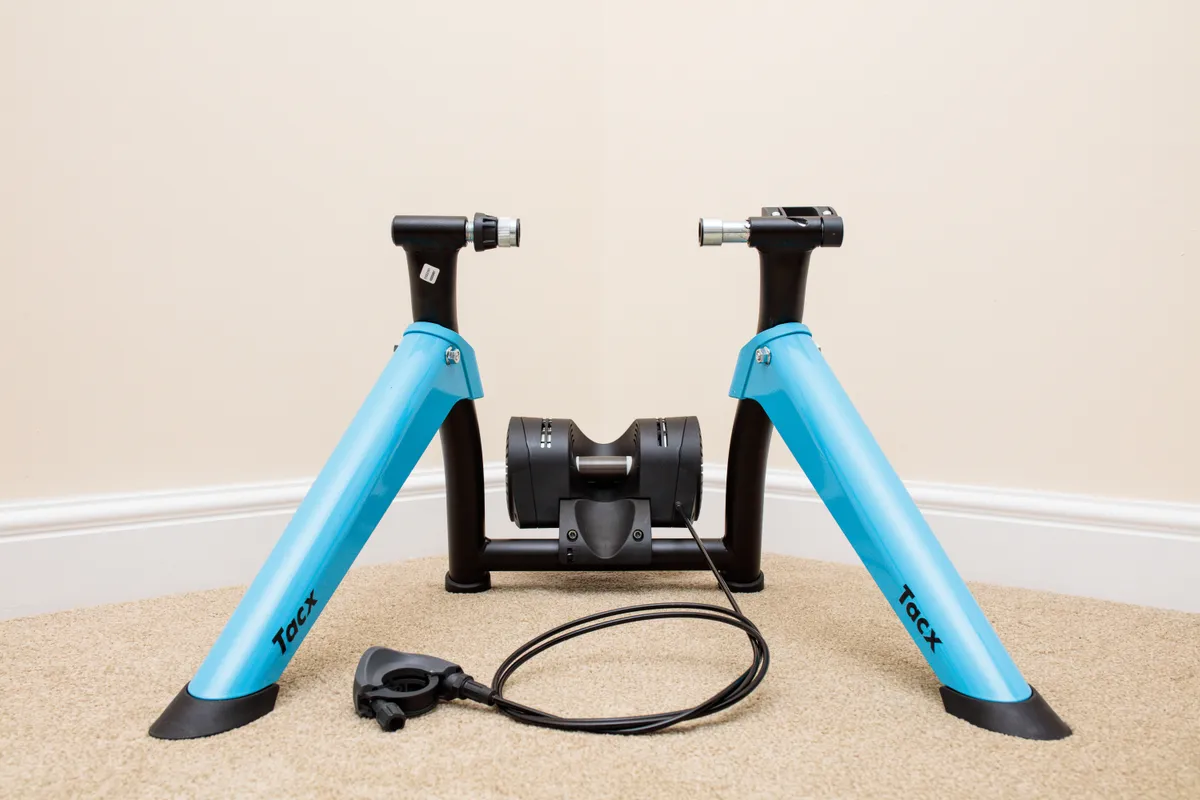
Turbo trainers are one of the most common types of indoor trainer. They require a bike to work and almost all turbo trainers are 'wheel-on'. This means the bike fits onto the trainer with a skewer through the rear axle. The rear wheel then rests against a drum, which spins when you start to pedal.
This drum is connected to a resistance unit. Unlike a smart trainer, the amount of resistance this provides is controlled manually by the rider.
Unless you've got a power meter on your bike, using a heart-rate monitor will be the most affordable and accessible route to training with data on a standard turbo trainer.
A wheel-on trainer can wear down a grippy racing tyre, so you may want to consider using harder-compound winter bike tyres or purchasing a trainer-specific tyre and popping that on a spare back wheel instead. Direct-drive turbo trainers do exist but they are rare.
Indoor bike

If you want to splurge on your setup, you can buy a high-tech smart bike that’s designed solely for indoor cycle training.
These aren’t your regular gym or spin-class bikes. They will usually offer the ability to monitor your power output, measure your pedal stroke, cadence and heart rate, automatically control resistance, and much more.
They are the most expensive option for indoor training but, arguably, offer the most convenient solution.
Rollers
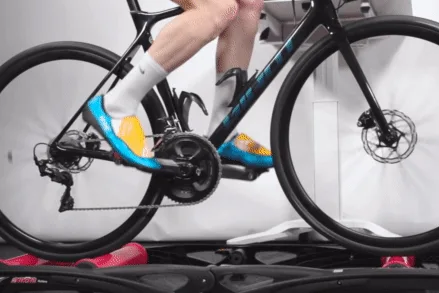
Another option is rollers. These consist of two parabolic free-spinning cylinders on which the bike stands. When you start pedalling, the cylinders rotate to simulate the ground moving beneath your wheels.
Since there is nothing holding the bike upright other than momentum from pedalling, they give a more natural-feeling ride.
This is both an advantage and a disadvantage: it’s great for improving core strength and balance, but can be tricky to get started.
If you don't know how to ride on rollers, you should try it the first few times near something you can hold on to.
Rollers are also compact and relatively easy to pack away, which is useful if you're short on space at home.
Find the right training space
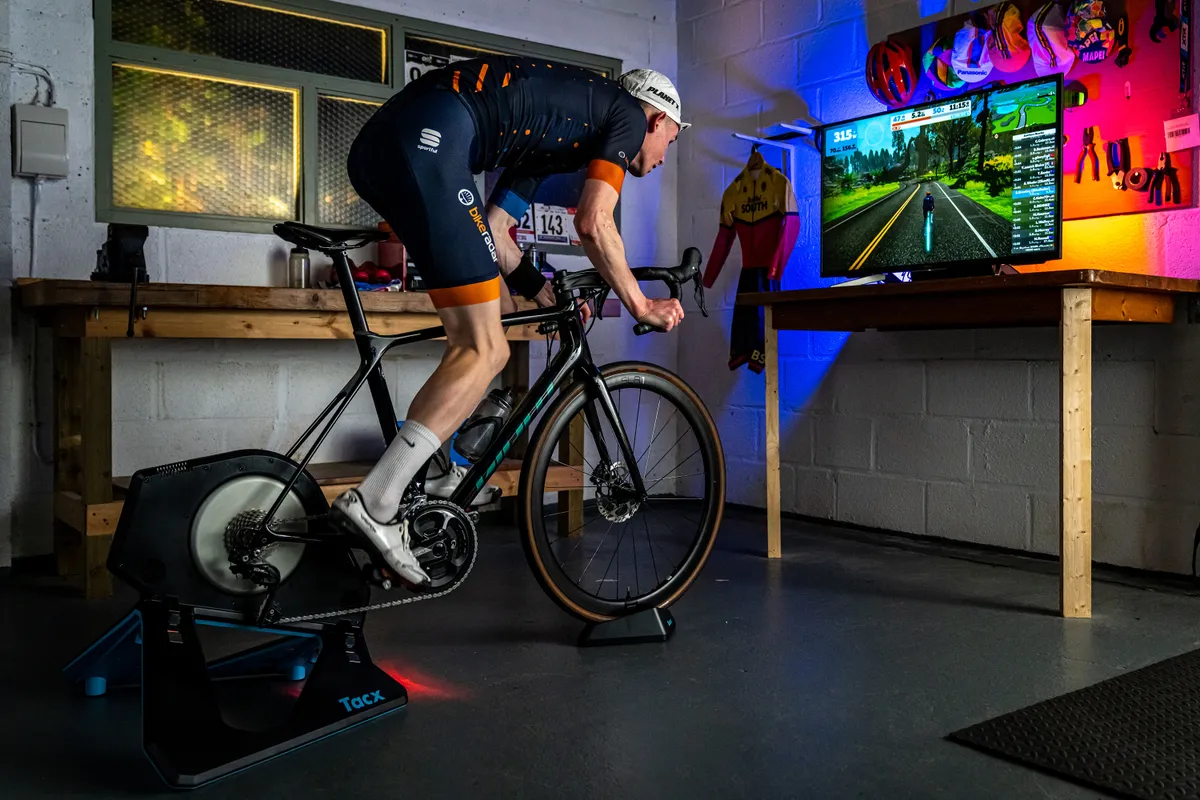
Once you've settled on a trainer, you need to find somewhere to put it.
Some people go all-out, turning their garage into a dedicated indoor training space for hours of indoor cycling. But you don’t need to go quite that far, especially if you're just getting started.
You’ll need an area, ideally inside or at least sheltered, where you can set up your bike and trainer, plus a little shelf or table at the front.
Choosing a space where you can leave your trainer set up will make hopping on for a quick session more efficient.
Indoor cycling equipment is fairly heavy and you are likely to sweat a fair bit, so a wipe-clean floor is preferable to a carpeted area.
If you only have a carpeted area, put down a mat to protect it.
If you’re planning on using rollers rather than a turbo trainer, you may prefer to set up near a surface you can hold on to or in a door frame.
The other thing to consider is noise. Indoor trainers, especially cheaper models, can be quite noisy machines and you’ll be standing up and powering along while you’re training.
If you live in a shared house, you may want to keep it away from quieter spaces, or find a relatively well sound-proofed room to do your workout.
Get the right indoor training accessories
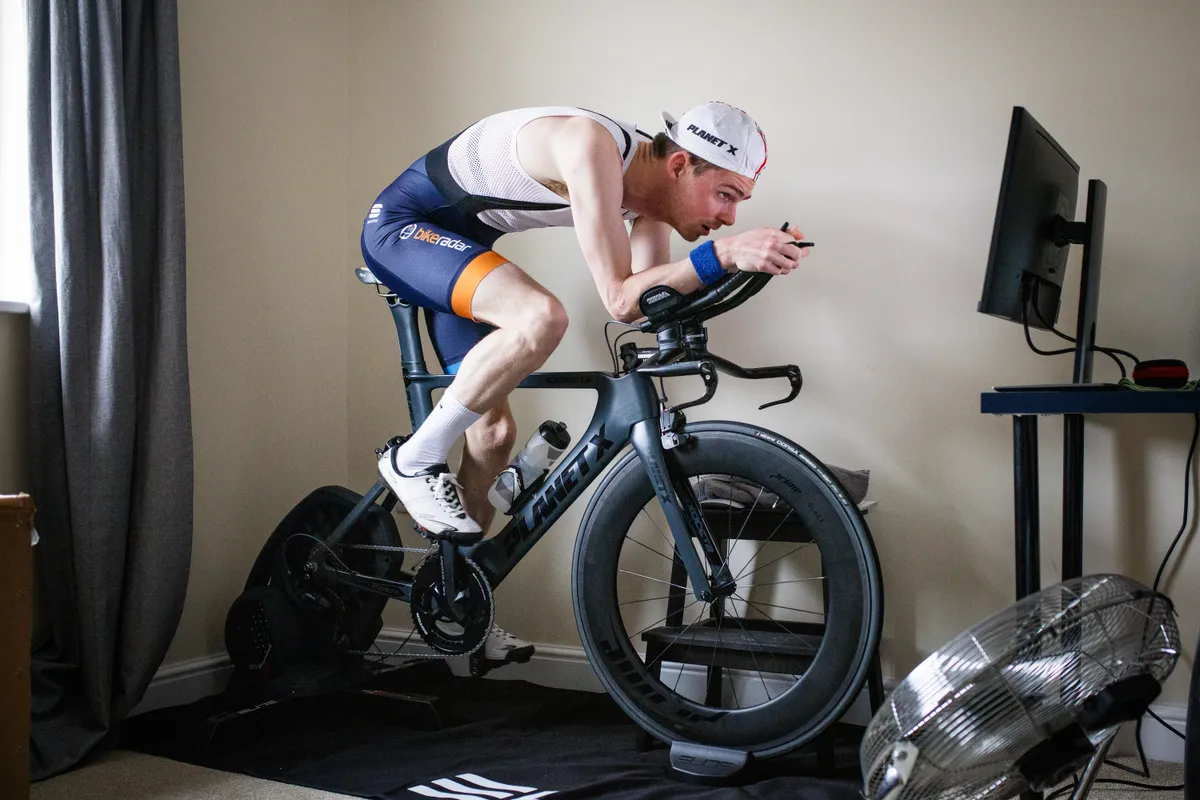
As our guide to the best turbo trainer accessories explains, indoor cycling is hot, thirsty work and you are likely to sweat buckets. Keep a bottle or two of water in easy reach so you can drink as you train.
You may need to take on fuel during longer workouts or Zwift racing. Consider keeping energy bars, energy gels or an energy drink to hand.
A fan is a great addition to your indoor cycling setup. It will replicate the wind you experience cycling outdoors and prevent you from becoming extremely hot.
Putting a mat under your bike and trainer is also wise. This will keep everything stable and in place, while protecting the floor. It will also help reduce vibrations and noise, especially on wooden floors.
It's also advisable to keep a towel on your handlebar to catch drips and wipe any sweat away.
If you’ve decided to follow an online workout or use a virtual cycling app, you’ll need to have a screen or laptop set up in front of you, so may need a table or mount.
Find a workout
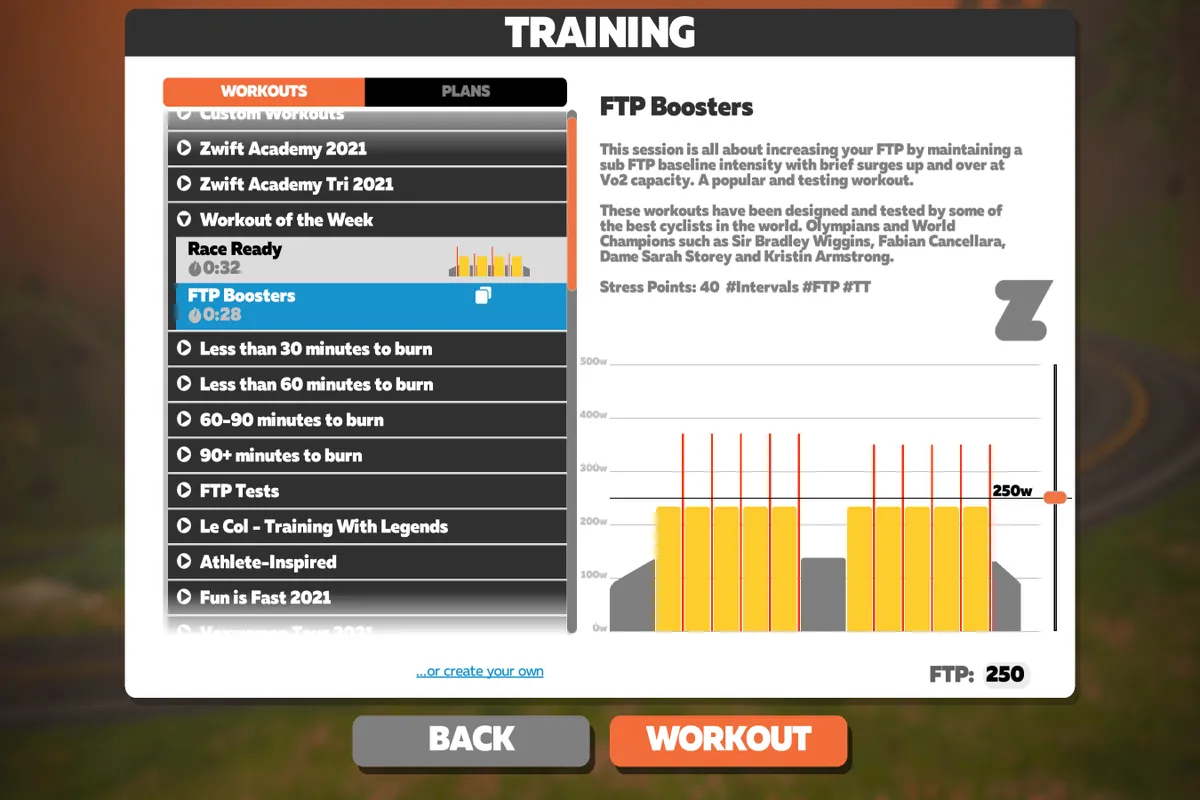
While you can hop on and spin away while listening to music, watching your favourite cycling film or tuning into a TV show, you’ll get a much more efficient and targeted workout if you follow a structured training session.
We've got guides to the best 60-minute turbo trainer workouts and HIIT (High-Intensity Interval Training) sessions.
Still, while there are undoubtedly benefits to cycling indoors, it can feel like a chore – particularly if slogging it out during a tough training session.
Signing up to a platform such as Zwift or MyWhoosh can make indoor cycling more fun. These training apps enable you to ride around virtual worlds, compete in races or follow structured workouts and training plans.
Other apps, such as TrainerRoad, focus solely on training if you're less interested in 'gamified' indoor cycling.
Do a fitness test, then repeat
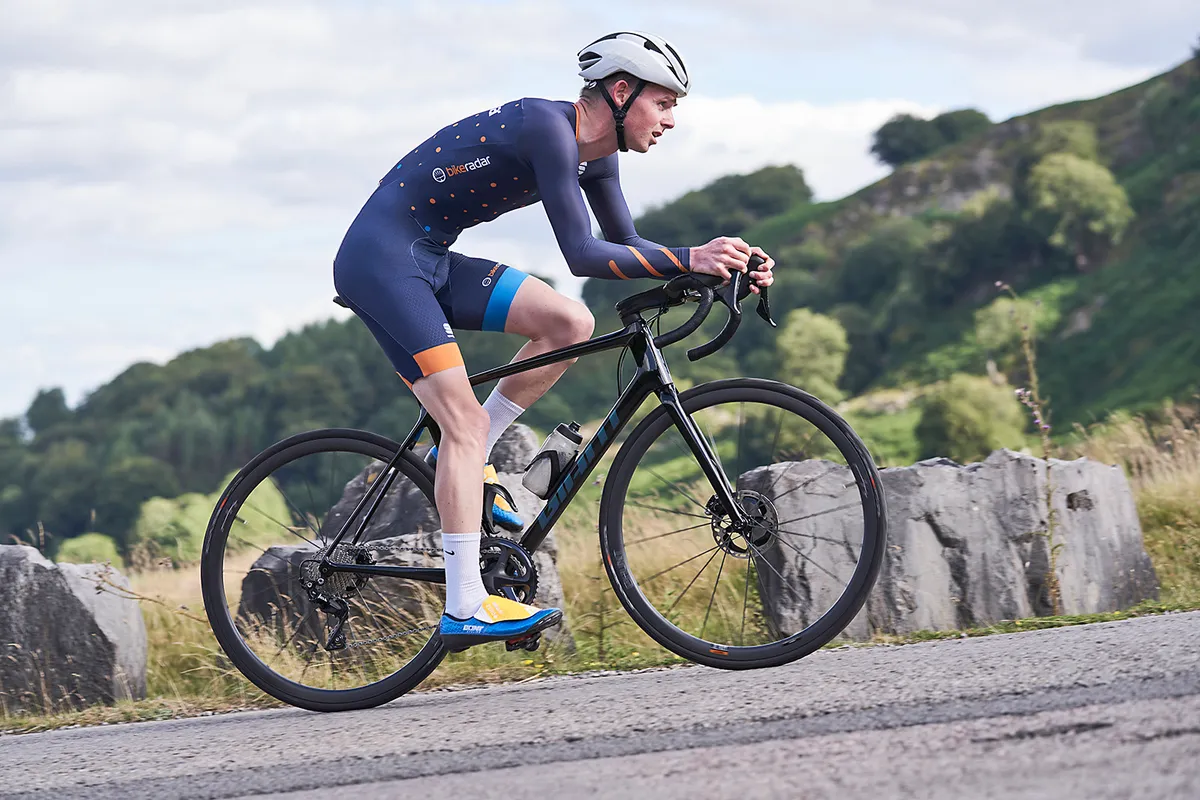
We’re not going to lie, this is going to hurt. But a baseline fitness test is very useful for establishing your power or heart rate zones so you know what to aim for when training. You can also use this test as a benchmark to see how you are progressing.
Many cyclists measure their fitness with a Functional Threshold Power (FTP) test, which essentially shows how hard you can ride for an hour.
You don't have to ride for an hour to figure out your FTP. An FTP test on Zwift takes around 15 to 20 minutes to complete.
Critical power is another useful metric to measure your fitness and it can provide a more complete image of your physiological ability as a cyclist than FTP.
Decide how often and how much you want to train
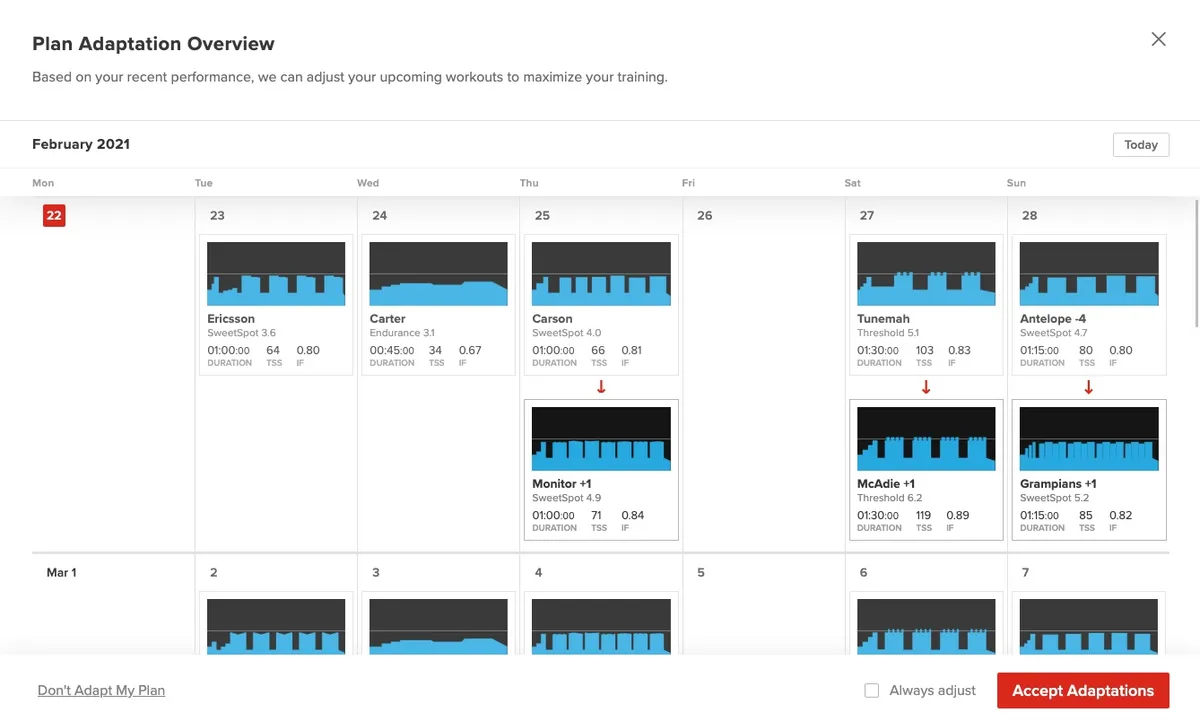
To plan your training, think about the timing and regularity of your sessions.
The time of day when you work out is largely going to be determined by what fits in with your lifestyle and preferences.
Some people find they work out better in the morning, others in the evening. If you’ve got other commitments, it may be a case of fitting in a session when you can.
A good baseline to aim for is three 30 to 40-minute focused sessions a week, with some longer rides outside on the weekend or your days off work.
Most of all, pace yourself, particularly if you are just getting started. You don't want to tire yourself out – indoor cycling can still lead to overtraining.
It's better to start at a sustainable level and keep it going, then up the duration or frequency of training when you feel you can handle more.
